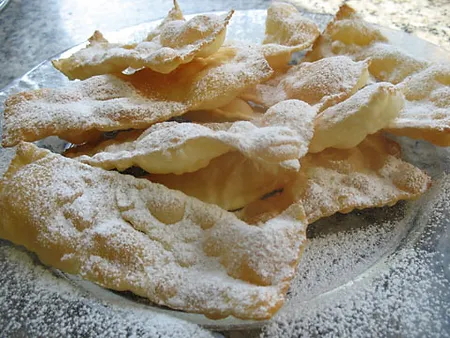Otranto, Gateway to the Orient
We are driving from Gallipoli, across to the east coast of Salento, and to the easternmost town of Italy, Otranto.
The landscape, its farms and stone walls, is a kaleidoscope of intense colours; the red earth and blue sky, the endless verdant olive groves and trees; these rooted to a parched brown earth that perhaps are still reminiscent of the arrival of the Turks.

Strategically positioned on the Adriatic, Otranto seems even today to be casting its gaze defensively across the strait in search of possible assault. The expansive and grand piazza, open to the sea and sky, exalts the 800 Martyrs of Otranto. History tells us of the the estimated 800 citizens who were captured, refused to convert to Islam and were subsequently executed by forces of the Ottoman Empire when it invaded and laid siege to the city and its citadel in the late 1400s.
I think for a moment, perhaps with some shame and despondency, how little we have progressed in our unsettled human history; how the threat of ISIS today repeats the vile, barbaric need of man to subjugate and destroy. It is a sobering thought that interrupts the flow of wonder and appreciation for the beautiful view before me.
We descend into the town around a curve that suddenly, unexpectedly opens to a bay, Below the imposing look-out piazza, the Lungomare Degli Eroi, is a small beach, crowded with young bathers enjoying the last warmth of a fading summer sun. It seems to me a beach scene from another time: the “dolce vita” years.

Perhaps it’s the young bathers screaming happily as they throw themselves off the craggy seawall jutting out into the sea. It remains in my memory as a black and white snapshot of bygone days. Who knows why?
Not far from here is the Baia Dei Turchi. The tourist reviews claim it to be the most beautiful beach in the area. There is a pine grove that separates the land from the sea. An aromatic scent emanating from the trees fuses with the salt in the air and the smell of myrtle, licorice and fennel. Small paths lead down to the beaches where at points rocky high cliffs plunge into the sea, and then down along the coast mellow and dissolve into soft white sandy shores.
We make our way up to the open massive square just outside the town walls. The sun, warm and comforting, produces just the right light for snapping photos. An odd sense of immeasurable time permeates here,as I look out towards the Orient: Roman ships once set out from here to conquer, and commercial vessels once brought the flavours of the east through this port; there is an ebb and flow of time that is almost palpable.
It’s lunchtime. Boutiques and bars begin to bring down the shutters, while the little kiosks selling the souvenir trivia persist in seeking the tourists’ attention.
Otranto within the citadel walls, is a small town rendered mysterious and fascinating by its tight serpentine streets and its honey coloured bare stone buildings. A walk along the streets lined with specialty shops, small restaurants with space for tables only outdoors and precariously bouncing on cobbled stones, lead to an area above the harbour, with crumbling ruins which include a stone altar open to the sky. A large multicoloured banner announces the imminent Otranto Jazz Festival which every year takes place in this intriguing open air space among the ruins. Wouldn’t I love to be there!

Choosing where to stop for lunch becomes a challenge. There are eight of us; some want a quick lunch, others are hankering for fish; others just want some respite from the noonday sun.
Most of the little restaurants along the streets are brimming to capacity with tourists and other gourmands of Salentino food! We search out where we might feast on some fish and seafood, the obvious choice since we are in Salento, an area of land between two seas!
Otranto positioned on one of the cleanest seas in Italy, offers a huge wealth of fish. In fact, fishing is still the main activity of many inhabitants of the town. Their daily catch is displayed proudly on large platters at the entrance of many restaurants in order to entice the patrons in.
By no means, however, is the cuisine from this region limited to fish. Blessed with the Mediterranean sun, the flavour of food from the Salento is heightened by the use of herbs such as rosemary, sage, marjoram, garlic, hot pepper, capers, mint and thyme.
Imagine for a moment the succulent taste of vegetables borne out of the sun drenched earth: grilled eggplant with mint and garlic, fried peppers, tomato soup ( in the local dialect ” prummitoru scattatu ” ), or stewed turnip tops ( ” rapacaule nfucate ” ).
This is “la cucina povera”, the simple and genuine cuisine of peasant and ancient tradition. In short, the real Mediterranean diet, folks, celebrated by all foodies around the world.
The aromas and scents of brine swirl around our nostrils as we finally succumb to a quaint little place on Corso Garibaldi. Tables are set below a pergola of climbing vines, and afforded some privacy from street gawkers by red plaid curtains that billow in the wind. We are seated, all eight of us, at a long table just outside the kitchen door where with every entry and egress of the waiters, whiffs of tantalizing aromas catch at our throats.
We are presented with a plate of live crustaceans for our inspection. The plate is then placed on a side table, and we wait for our orders to be taken. A plate of “orecchiette” in a seafood sauce sounds delectable.

Suddenly, from the corner of his eye, Rocco spies one of the crabs flipping off the plate and sauntering over the table for an attempted escape. He yells for the waiter and informs him in his perfect Calabrese: “u pisci s’indi vaii”.

We break into raucous, uncontrollable laughter. Just a bunch of kids having fun!
As the sun begins to announce the fading day, and as one might expect from a popular Italian seaside town, Otranto comes to life on summer and late summer evenings. The streets begin to swell with people and noise, and shops, restaurants and bars keep the midnight oil burning. Little stands on the Lungomare degli Eroi offer cool coconut slices, ice cream for the kids and honey sweet watermelon wedges—-something to break the monotony of the continuous and languid strolling along the promenade.










0



